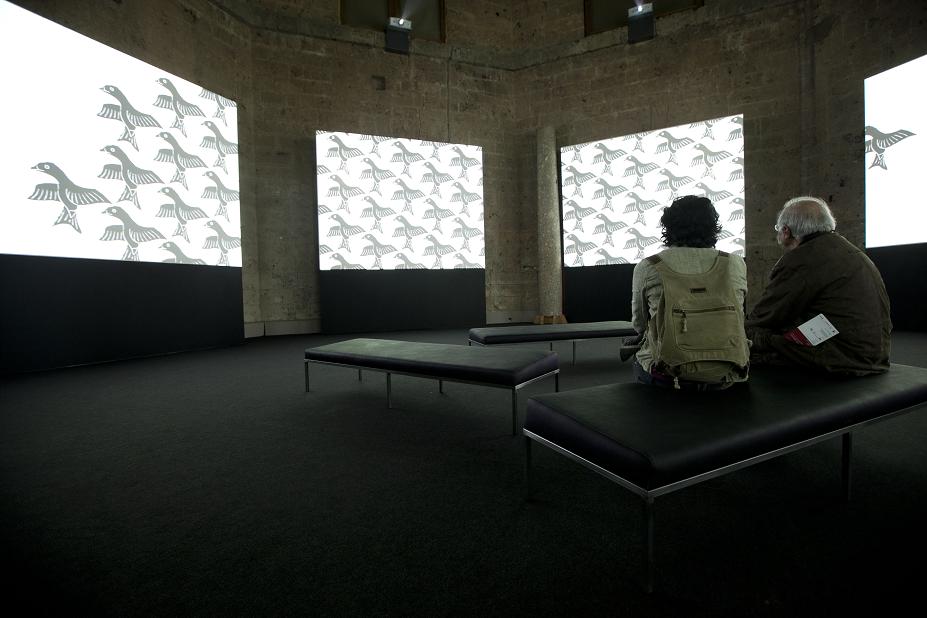M.C. Escher. Infinite Universes is once more open to the public at the Palace of Carlos V. The Alhambra venue had closed on 13 June on account of the 60th International Festival of Music and Dance of Granada.
Since it was inaugurated on 29 March last, the exhibition received almost 210,000 visitors at its two venues, the Alhambra’s Palace of Carlos V and Granada Science Park. M.C. Escher. Infinite Universes, a sample of some 135 of the artist’s most representative pieces, grouped into seven broadly monothematic environments and spread over two venues, will now remain open until 29 February 2012.
The Science Park exhibition will take a look at the scientific side of Escher, while the emphasis at the Alhambra will be on his facet as an artist. The exhibition also features several audiovisual works, including documentaries on his life and work and a series of films representing the visual tricks hidden in his works.
The Alhambra side of the exhibition includes approximately 25 works, in a range of techniques, covering different stages of Escher’s output. It analyses the effect on his work of his two trips to Spain and the Alhambra (1922 and 1936), particularly the geometry of its mosaics and stucco work of the Nasrid site. Escher was fascinated by the geometry of its tessellations and architecture, marking a before and after in how he approached his own work.
One of the most appealing results of this Moorish influence on his work was his fascination for including animals and other life forms absent from Muslim art into the geometry of his sketches and tessellations. The chapel of the Palace of Carlos V, with its fascinating octagonal architecture, is hosting a series of films explaining some of the visual tricks used in his works.
The exhibition is based on an original idea. Commissioned by Borja Ferrater, Juan Domingo Santos and Carlos Ferrater, it was made possible thanks to the framework institutional collaboration document between PAG and the Granada Science Park Consortium.
Maurits Cornelis Escher (1898-1972, Holland) is known world wide for his lithographs and woodcuts. His work shows a profound observation of reality and the expression of his own fantasies. Manipulating space, time and perspective, he reorganises them in accordance with his own ingenious logic. Quirks of perspective are commonplace, infinity is a direction, negative and positive are interchangeable and the result is fascinating.
Escher briefly studied architecture, but soon switched to graphic arts. His unique vision opened him to the importance of method in the creative process, leading him to study mathematics. It is on the basis of this discipline, particularly geometry, that Escher builds his optical illusions. His studies on three dimensional geometric grids and the regular division of the plane give his work a new spatial quality, smashing the rules of perspective that had remained valid since the Renaissance.
Patronato de la Alhambra y Generalife
Organismo encargado de la protección, administración y conservación de la Alhambra y el Generalife





 Contact
Contact
















